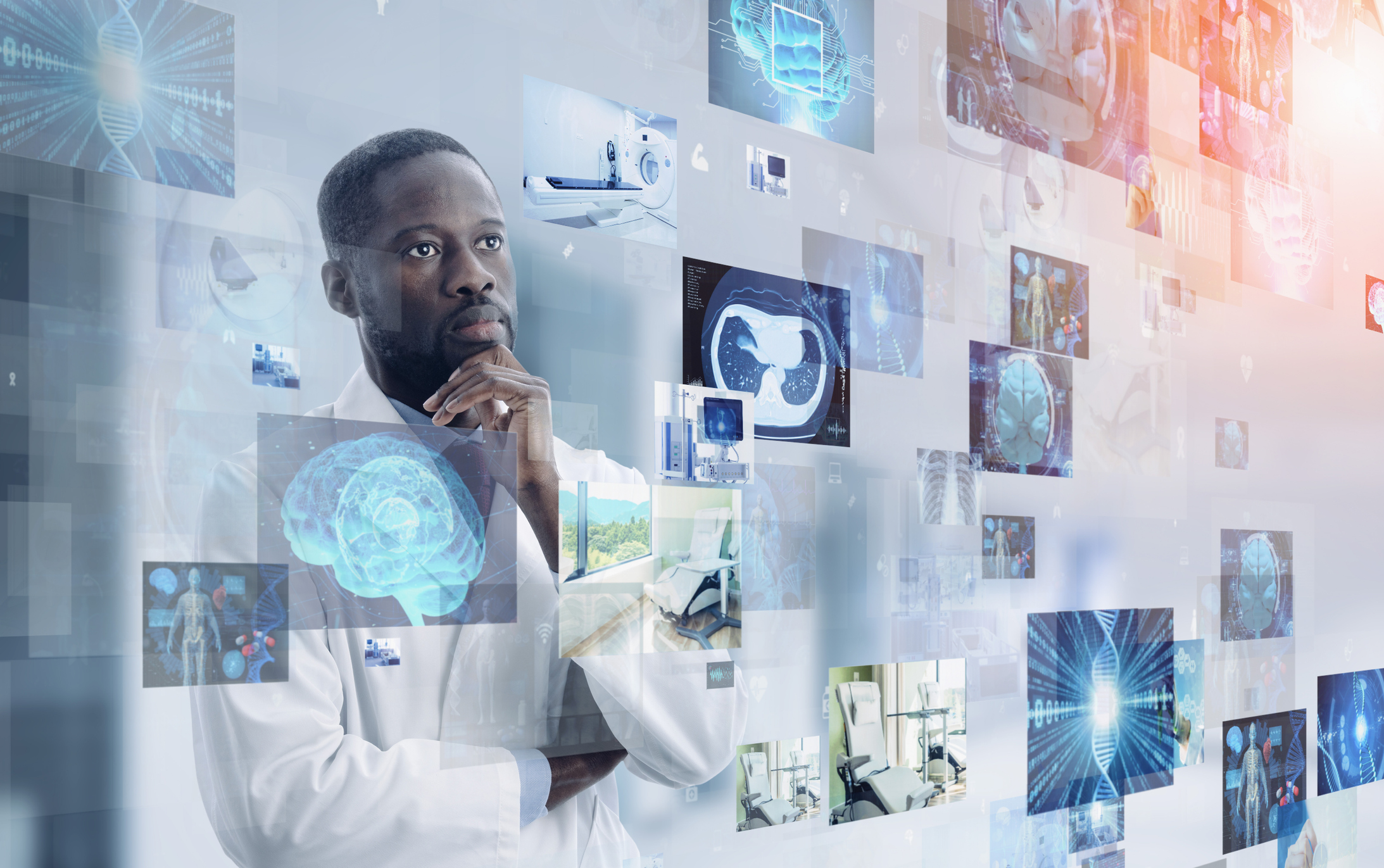New Trends in Neuroscience that Promise Neurologists Innovation & Efficiency
Neuroscience encompasses the study of our nervous system, with our brain at the forefront of ever-evolving research. Complex and multifaceted, the brain’s vast interconnectedness highlights the need for continued research to detect and treat neurological disorders — which is why new trends in neuroscience are particularly profound.
As a specialty with a longstanding history of innovation to advance the treatment of cognitive diseases and disorders of the nervous system, neurologists have a legacy of embracing new technologies and moving medicine forward.
This research-driven work helps patients and neurologists alike, as innovative neurology pushes for better health outcomes, more accurate and faster disease identification, and improved treatment opportunities. Therefore, novel trends in neuroscience are necessary for continuous growth and advancement.
Technical Trends in Neuroscience
Why is it so important to stay on top of trends in neuroscience? With technology moving quickly and medicine constantly evolving, neurologists can harness the power of change and use it to increase work productivity and patient satisfaction.
Below are some of the most recent advances neuroscientists can add to their legacy and use to improve care outcomes.
Artificial Intelligence (AI)
Artificial intelligence (AI) is making waves in many disciplines but can provide particularly crucial benefits in neuroscience as it improves ways to diagnose and treat complex neurological disorders.
It’s quite possible that AI marks one of the most critical trends in neuroscience because of its ability to assess large quantities of patient data — making it incredibly efficient at helping neurologists identify disease patterns.
Some of the tools currently available can diagnose epilepsy with astonishing accuracy, support surgery plans, and draw brain maps of patients.¹ AI can further assist providers in developing potential new treatments, all whilst taking individual neurological profiles of patients into account.¹
AI has taken on many of the tasks previously reserved for neurologists and can now detect stroke on neuroimaging, identify diabetic retinopathy based on retinal scans, and analyze EEGs (electroencephalogram) on its own.² As a result, practices are transitioning to using AI as a complementary tool that enhances their work experience and lessens the workload for neurologists.
Brain-Computer Interface Technology (BCI)
Brain-computer interfaces, also referred to as BCIs, show just how far neurologists have come in their endeavor to understand the human brain. BCIs can examine signals from the brain and conclude what the desired intent is based on brain activity.³
Because people with neuromuscular disorders including cerebral palsy and stroke can suffer from impairment of part of their brain, the aim of brain-computer interface technology is to restore the patients’ previous brain function and capabilities.³
BCIs have also promoted the interpretation of brain signals and associated commands for patients that require prostheses or the use of robotic arms.³ Utilizing machine learning, BCI is trained to recognize specific signals and link them to intents to act.⁴
Promising novel solutions for individuals with disabilities, BCI technology is a field with high research interest and vast potential. However, given the brain’s known complexity, more research will be needed, particularly long-term studies, to grasp the details surrounding neurological signals and the effectiveness of BCI technology in real-life circumstances.
Precision Medicine
Precision medicine is not just a trend that’s making waves in the neuroscience discipline but is evolving into an important branch in its own right. For neurologists, this means that medical advances are now enabling us to find tailored solutions for the patients we’re treating.
Customizing treatment plans for individual patients leads to more precise targeting of a patient’s medical condition based on genetics, environmental (including social and behavioral) factors, and lifestyle choices. Innovative neurology will harness the power of genetic testing to tackle the root cause of neurological disorders head-on.
One of the most remarkable benefits of precision medicine includes the increased efficiency and predictability of treatment success rates. It also allows for improved disease detection and provides clinicians the opportunity to prescribe drugs that are (1) more likely to be effective and (2) have fewer side effects.
Virtual Reality (VR)
Virtual reality is yet another exceptional trend moving neuroscience forward as it helps push for more technical advances and offers solutions for neurological disorders and chronic pain. Having expanded significantly in the past few years, neurologists now find themselves working with high-quality 3-D images that provide interactive patient experiences.⁵
Some of the areas heavily implementing virtual reality include patient education, pain management, and rehabilitation — making VR an important component of the neurology specialty in and outside of the operating room.⁵
There is a lot of additional growth expected in virtual reality — showing promise for neurorehabilitation and the enrichment of patients’ gross motor skills by providing real-life training examples. Similarly to the brain’s own consciousness, VR uses a simulation of the brain and its surroundings in anticipation of sensory effects and movement.⁶
Gene Therapy
The FDA (U.S. Food and Drug Administration) defines gene therapy as a treatment method that uses gene modification to eliminate or improve certain diseases. The disorders primarily addressed through gene therapy include various forms of cancer, genetic illnesses, and infectious diseases.⁷
Gene therapy is thus emerging as a state-of-the-art therapeutic method that could potentially replace or change mutated genes, making it one of the most remarkable trends in neuroscience.
While many gene therapy strategies are still in the works, hospitals already offer a range of FDA-approved gene- and cell-based therapies — however, many remain experimental and are the focus of ongoing clinical trials.
For neurologists, gene therapy is particularly attractive in light of the many neurodegenerative and neurodevelopmental disorders that have — in the past, utilized treatment options offering only symptomatic relief while failing to address the root cause of the disease.⁸
Research remains diligent about expanding the potential of gene therapy strategies that could modify gene mutations. It has, therefore, designed viral and non-viral vectors of gene delivery that show promise in delivering novel therapy options for an array of neurological diseases.⁸
Innovative Office Tools for Neurologists
Trends in neuroscience go much further than just the clinical side, as neurologists maintain a significant administrative workload. Besides an EHR (electronic health record) that offers specialized neurology templates and customized PM (practice management) software, neurologists strive for tools that specifically address the needs of their industry.
This means that new trends are leading hospitals to improve office tools and productivity as much as it’s striving for technological advancements.
At Vivlio Health, we understand that it’s critical for you to stay ahead so you can continue providing your patients with quality care — or even better, improve their care experience by delivering more efficient and reliable results.
With hands-on experience in the healthcare industry, our staff’s goal is to improve your workflow, so you can focus on seeing your patients without the burden of administrative mishaps.
Vivlio Health has developed a platform that allows you to instantaneously access your patient’s medical records — so you can locate comprehensive medical histories, medication lists, and any prior neuroimaging, including MRIs and CTs.
As a specialty provider, it’s imperative to have access to your patient’s past health assessments because you rely on referrals from other physicians. Potential communication gaps could easily be resolved this way, allowing you to prepare better for upcoming appointments.
Questions? Reach out or sign up for a free demo here. Let’s continue to push innovative neurology forward and provide high-quality patient care — together.
References:
- “Exploring the Future of Neurology: How AI is Revolutionizing Diagnoses, Treatments, and Beyond.” Frontiers, https://www.frontiersin.org/research-topics/57346/exploring-the-future-of-neurology-how-ai-is-revolutionizing-diagnoses-treatments-and-beyond. Accessed 6 June 2024.
- Vinny, P W et al. “Artificial Intelligence shaping the future of neurology practice.” Medical journal, Armed Forces India vol. 77,3 (2021): 276-282. doi:10.1016/j.mjafi.2021.06.003.
- Shih, Jerry J et al. “Brain-computer interfaces in medicine.” Mayo Clinic proceedings vol. 87,3 (2012): 268-79. doi:10.1016/j.mayocp.2011.12.008.
- “Science & Tech Spotlight: Brain-Computer Interfaces.” GAO, 8 September 2022, https://www.gao.gov/products/gao-22-106118. Accessed 6 June 2024.
- Scott, Hayden et al. “Virtual Reality in the Neurosciences: Current Practice and Future Directions.” Frontiers in surgery vol. 8 807195. 18 Feb. 2022, doi:10.3389/fsurg.2021.807195.
- Riva, Giuseppe et al. “Neuroscience of Virtual Reality: From Virtual Exposure to Embodied Medicine.” Cyberpsychology, behavior and social networking vol. 22,1 (2019): 82-96. doi:10.1089/cyber.2017.29099.gri.
- “What is Gene Therapy?” FDA, 25 July 2018, https://www.fda.gov/vaccines-blood-biologics/cellular-gene-therapy-products/what-gene-therapy. Accessed 10 June 2024.
- Paul, Abhik et al. “Gene Therapy: The Next-Generation Therapeutics and Their Delivery Approaches for Neurological Disorders.” Frontiers in genome editing vol. 4 899209. 22 Jun. 2022, doi:10.3389/fgeed.2022.899209.



